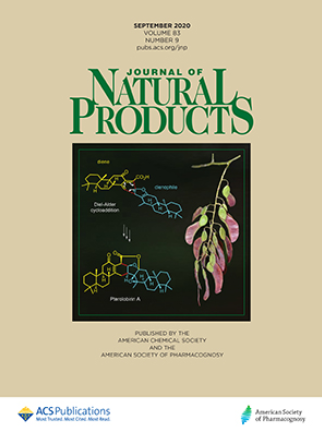靶向质谱法和非靶向质谱法均不能检测到单叶草中格雷烷型毒素。
IF 3.6
2区 生物学
Q2 CHEMISTRY, MEDICINAL
引用次数: 0
摘要
独角草(Monotropa uniflora L.)是一种北美传统药用植物,近年来在全国范围内的消费量有所增加。然而,1889年的一项研究报告了一种灰色毒素的存在,引起了关于其安全性的争议。有必要重新审视这种毒性的说法,因为独一草的复兴流行。我们应用了更敏感的分析技术,以确定可能存在的灰色毒素在一个不同的抽样单歧杆菌,使用质谱和ms2为基础的分子网络。在50个M. uniflora样本中,既没有检测到灰色毒素,也没有检测到结构类似物,反驳了先前的分析。本文章由计算机程序翻译,如有差异,请以英文原文为准。
Targeted and Untargeted Mass Spectrometry Do Not Detect Grayanane-Type Toxins in Monotropa uniflora L.
Monotropa uniflora L. ("ghost pipe"), is a North American traditional medicinal plant which has recently seen an increase in consumption nationwide. However, a single 1889 study reported the presence of grayanotoxin I in M. uniflora, generating controversy regarding its safety. It is essential to revisit this claim of toxicity given Monotropa uniflora's resurgence in popularity. We applied more sensitive analytical techniques to determine the possible presence of grayanotoxins in a diverse sampling of M. uniflora, using mass spectrometry and MS2-based molecular networking. Across 50 M. uniflora samples, neither grayanotoxins nor structural analogues were detected, refuting the earlier analysis.
求助全文
通过发布文献求助,成功后即可免费获取论文全文。
去求助
来源期刊
CiteScore
9.10
自引率
5.90%
发文量
294
审稿时长
2.3 months
期刊介绍:
The Journal of Natural Products invites and publishes papers that make substantial and scholarly contributions to the area of natural products research. Contributions may relate to the chemistry and/or biochemistry of naturally occurring compounds or the biology of living systems from which they are obtained.
Specifically, there may be articles that describe secondary metabolites of microorganisms, including antibiotics and mycotoxins; physiologically active compounds from terrestrial and marine plants and animals; biochemical studies, including biosynthesis and microbiological transformations; fermentation and plant tissue culture; the isolation, structure elucidation, and chemical synthesis of novel compounds from nature; and the pharmacology of compounds of natural origin.
When new compounds are reported, manuscripts describing their biological activity are much preferred.
Specifically, there may be articles that describe secondary metabolites of microorganisms, including antibiotics and mycotoxins; physiologically active compounds from terrestrial and marine plants and animals; biochemical studies, including biosynthesis and microbiological transformations; fermentation and plant tissue culture; the isolation, structure elucidation, and chemical synthesis of novel compounds from nature; and the pharmacology of compounds of natural origin.

 求助内容:
求助内容: 应助结果提醒方式:
应助结果提醒方式:


